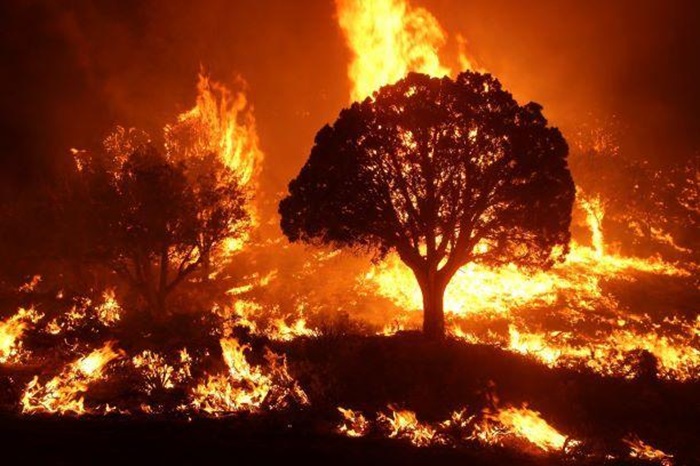Real Estate
Wildfire Fallout: The Changing Landscape of California’s Housing and Insurance Markets

- California’s wildfire issue is altering real estate markets, with low property values in high-risk areas and increasing demand in safer ones.
- The increased frequency of wildfires has raised house insurance rates and made obtaining coverage in fire-prone areas more complicated.
- Fire-resistant construction, which uses more expensive materials and techniques, is becoming increasingly important, driving up housing prices and stalling rebuilding efforts.
- Technology and prediction techniques are being used to reduce wildfire risk, guiding real estate investments and construction initiatives for future resilience.
California has long been recognised for its breathtaking scenery, lively cities, and thriving economy. However, in recent years, the state has become associated with a different reality: wildfires. The increasing severity and frequency of wildfires in California have not only wreaked havoc on people and the environment, but they are also fundamentally changing the real estate, construction, and home insurance businesses. These flames are driving the state into unknown territory, necessitating a reassessment of where and how homes are built, purchased, and insurance.
A Perfect Storm of Devastation
California saw one of its most severe wildfire seasons in history in 2023, with roughly 5,300 fires burning over 95,000 acres of land. Prolonged drought conditions, rising temperatures, and parched landscapes fuelled these unmanageable fires, forcing thousands of people to flee, destroying property, and causing extensive devastation.
The increasing intensity of wildfires has transformed from an environmental concern to an economic and infrastructure disaster. The long-term consequences of these fires are apparent, from residents being displaced for extended periods of time to economic setbacks caused by property losses. As communities recover, the economic consequences extend far beyond the immediate aftermath of a catastrophe; they pervade the state’s real estate, construction, and insurance industries, altering how Californians live and do business.
Real Estate Market Fragmentation
One of the most visible consequences of California’s wildfire issue is the influence on the real estate market. Property values in wildfire-prone areas have plunged, while demand in fire-safe zones has increased. Homebuyers are increasingly avoiding places that have had recurrent fire threats, and as a result, the value of homes in these high-risk areas has fallen. Properties in places thought to be less prone to wildfires, on the other hand, attract a higher price.
The separation in the housing market has resulted in an economic imbalance. Property values in wildfire-prone areas are falling, while safer places are seeing inflationary pressures as demand rises. As a result, the real estate market has become more divided, with increasing inequality across locations based on their fire risk.
Insurance Challenges Exacerbate the Crisis
The insurance industry, which provides financial protection to homes, has been adversely damaged by the wildfire disaster. As wildfires become increasingly common and destructive, several insurance firms are withdrawing out of high-risk areas or significantly raising premiums. For homes in wildfire-prone areas, finding affordable insurance has become practically impossible. Some are left uninsured, while others face exorbitant fees, making buying and selling properties even more difficult.
Buyers are also hesitant since there is a shortage of accessible and reasonable insurance in fire-prone locations. Without insurance, securing a mortgage is difficult, and many potential homebuyers are priced out of the market. This has hindered real estate transactions in many areas, making some houses unsellable, further lowering home values and increasing the state’s housing crisis.
Fire-Resistant Construction Is a Necessity, Not A Choice
California’s building industry is facing additional demands as a result of periodic wildfires. Rebuilding efforts in fire-affected areas are more complex and expensive, owing to both regulatory restrictions and increased costs of fire-resistant materials. Building fire-resistant buildings has become a must, as homeowners and builders recognise the importance of designing structures that can withstand the growing threat of wildfires.
New building rules require the use of fire-resistant materials including metal roofs, tempered glass windows, and non-combustible siding. Builders are also implementing new design principles, such as smart landscaping and the building of defensible zones, to reduce the chance of fires spreading into residences. While these modifications are necessary to protect lives and property, they come at a higher cost, raising the price of new dwellings.
In addition to the cost increases, labor shortages and supply chain disruptions are slowing down reconstruction operations. For communities affected by wildfires, this means lengthier recovery times and additional financial hardship on individuals trying to rebuild their lives. The higher costs and delays associated with fire-resistant construction are exacerbating the state’s already acute housing scarcity, as homes in fire-prone areas require years to restore.
Shifting Investment Priorities
The increased threat of wildfires is influencing not only construction techniques, but also where developers and investors are willing to stake their bets. Real estate developers are becoming more hesitant about expanding in high-risk areas, preferring safer zones that are less prone to flames. This shift in development goals has long-term consequences for local economies, especially in wildfire-prone areas that may struggle to attract new investments or initiatives.
Investors are increasingly considering wildfire risks in their decision-making processes. Real estate investment trusts (REITs) and other institutional investors are increasingly avoiding regions that have experienced many fires or are expected to be at high risk in the future. This shift in investment patterns is altering California’s real estate market, with certain areas missing out on economic development prospects due to their sensitivity to wildfires.
Innovations in Technology and Resilience
In response to the rising wildfire hazard, both the real estate and construction industries are using technology to reduce risks. Fire-resistant building materials, such as those engineered to endure high temperatures, are becoming more common, and fire detection systems are being integrated into new construction to provide early warnings. Drones are also being used to assess fire threats and inspect damaged areas more rapidly and safely, helping with both preventive and recovery operations.
Predictive analytics and mapping techniques are now essential for homebuyers and real estate investors when assessing wildfire risks prior to purchasing properties. These tools help stakeholders make more informed decisions by weighing the risks and benefits of investing in specific areas.
Conclusion: Navigating the New Reality
California’s wildfire disaster is prompting a rethinking of how homes are built, sold, and insured throughout the state. The real estate market is becoming more divided into high-risk and low-risk locations, and construction techniques are shifting to prioritize fire resilience. Meanwhile, insurance firms are dealing with how to provide coverage in a world where wildfires are becoming more frequent and destructive.
Building more robust homes, building safer neighborhoods, and developing alternative financing and insurance options for properties in fire-prone areas will be critical to sustaining California’s viability as a place to live and work. The challenge is enormous, but so is the potential to rebuild with resilience and sustainability at its core.

























































